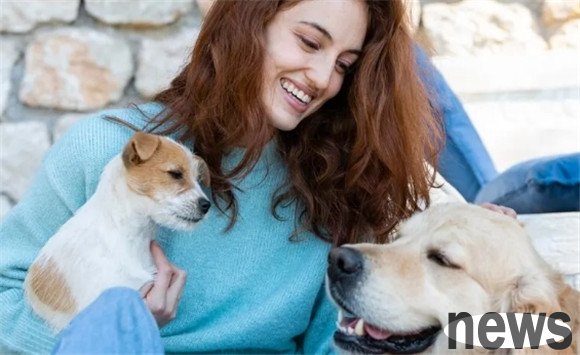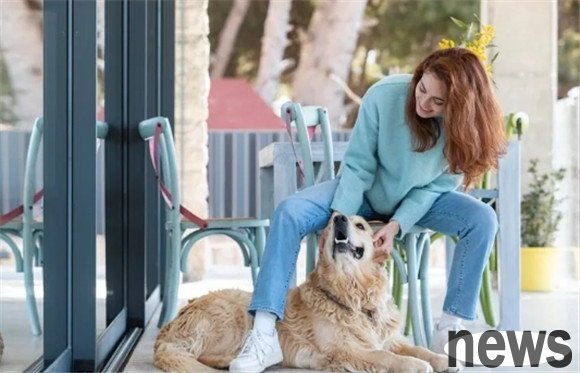When you bring back a cute puppy, one of the most important training tasks is to teach it to urinate and defecate in the right place. This training requires patience and consistency, but once the right habit is established, your dog will use the toilet at the right time and place to make your life easier and more enjoyable. Today, we will share some effective ways to train your dog to use the toilet.

1. Establishing rules
Establishing a fixed defecation schedule for dogs is one of the important steps in training dogs to go to the toilet. By taking the dog out to urinate and defecate at a fixed time every day, it can help it establish regular bowel movement habits. Here are some suggestions that will help improve this training method.
1) Choose the right time: Determine a fixed defecation time for you and your dog, such as every morning, after lunch and after dinner.
2) Adhere to consistency: Try to take the dog out to urinate and defecate at the same time. Maintaining the consistency of time will help cultivate its defecation habits.
3) Observe the dog's behavior: Pay attention to the dog's behavior before urinating and defecating, such as sniffing, pace, etc., which may be signals that it wants to defecate.
4) Praise and reward: When a dog completes urination and defecation at the specified time, give praise and rewards in time to help it establish the correct connection.
5) Patience and persistence: There may be challenges during training and require patience and persistence. Don’t give up, keep training until you establish a stable bowel movement habit.
6) Full exercise: Moderate exercise helps promote dogs' digestion and metabolism, and helps control the time and frequency of bowel movements.
7) Drink water regularly: provide sufficient water for dogs, but it is best to reduce the amount of water before going to bed at night to avoid getting up and defecating at night.
Through the above methods, you can help your dog establish a fixed defecation schedule, cultivate good urination and defecation habits, and make life more orderly and pleasant.
2. Selecting a specified area
Selecting a fixed urination and defecation area for the dog is one of the keys to successful training. Here are some methods that can help you train your dog to defecate in a specific area:
1) Choose a suitable location: Choose a place far away from the living area to prevent the dog from defecating at home. The location should be quiet and clean, and be far away from the water source.
2) Guide the dog: Take it to the designated defecation area every time you take the dog out to urinate and defecate. You can use password words such as "peeze" or "defeat" to guide you.
3) Observe the dog: When the dog defecates in a designated area, rewards and praises will be given in time to enhance its habit of defecating in this area.
4) Continuous supervision: During training, try to supervise the dog to avoid defecation outside the designated area.
5) Patience and consistency: Training requires patience and consistency, and do not deflate because the dog occasionally defecates outside the designated area. Persist in training until you develop good habits.
6) Regular cleaning: Clean the defecation area regularly and keep it clean and hygienic, so that the dog will be more willing to defecate in this area.
7) Avoid punishment: Do not impose severe punishment on your dog, which may negatively affect your urination and defecation training.
Through the above methods, you can help your dog develop the habit of defecation in a fixed area, making life more convenient and tidy.

3. Supervision
In the process of training dogs to use the toilet, continuous supervision is very important. Here are some methods that can help you monitor your dog during training:
1) Understand how long your dog defecates: Dogs usually need to defecate after waking up, eating, and after activity. Understanding these habits of dogs will help you prepare in advance.
2) Observe the dog's behavior: There are some specific behaviors that the dog will show that it is about to defecate, such as spinning around in circles, smelling the floor, stopping and looking at a place intently, etc. When you observe these signs, take your dog to the designated defecation area quickly.
3) Establish rules: Try to take the dog to the designated defecation area at a fixed time, which will help develop the habit of fixed defecation.
4) Reward the correct behavior: When the dog defecates in a designated area, reward and praise will be given in time to let it know that this behavior is correct.
5) Reduce wrong behavior: If the dog defecates outside the designated area, do not punish severely, you can blame it quietly and clean it up. At the same time, we must strengthen supervision to avoid re-incidence of wrong behavior.
6) Maintain consistency: Keep consistency during training, try to take the dog to the defecation area at the same time every day, and develop good habits.
Through the above methods, you can effectively supervise your dog and help it develop fixed bowel habits during training.
4. Rewards
When a dog defecates in a designated area, it is very important to give a reward immediately. This timely positive feedback can help dogs establish correct behavioral habits. The reward can be some snacks or praise the dog in a gentle tone to let it know that this behavior is desirable.
When giving rewards, pay attention to the following points:
1) Timeliness: Rewards should be given immediately after the dog completes the correct behavior, so that the dog can better connect the rewards with the correct behavior.
2) Positiveness: The reward should express your high praise for the dog and let it feel your joy and recognition.
3) Consistency: Be consistent during training to ensure that every correct behavior is rewarded, which can enhance this behavior.
4) Moderateness: The reward should be moderate, and do not make the dog over-excited or rely too much on the reward, so as not to affect the training effect.
By giving rewards in a timely manner, it can help dogs develop habits of defecation in designated areas faster and establish positive behaviors associated with rewards..
5. Avoid punishment
Don’t punish dogs for defecation in the wrong place at will. This is very important. Random punishment can make dogs confused and anxious, and may even lead to reverse reactions, making training more difficult. On the contrary, positive methods, such as timely rewards and guidance, should be used to help dogs establish correct bowel habits. This can enhance the trust and intimacy between the dog and its owner and promote the achievement of training results.
6. Cleaning and eliminating the smell
It is very important to clean up the dog's bowel movements in the wrong place in a timely manner. The dog will be attracted by the smell and may choose to defecate at the same location again. Clean with a special cleaner to completely remove residual odors. At the same time, we must maintain patience and consistency during training, adhere to training methods, and gradually cultivate good urination and defecation habits for dogs.
7. Patience and consistency
Training dogs to use the toilet requires patience and consistency. This is a process of gradually building habits and do not expect immediate results. Each dog has different learning speed and adaptability, and some dogs may take longer to adapt to new toilet habits. Be patient during training and don't be discouraged by slow progress. Adhere to the same training methods and schedules, timely praise and reward correct behaviors, and avoid punishing wrong behaviors. Through persistent training, dogs will eventually develop good toilet habits.
8. Regular drinking water
Controlling the dog's drinking water time can help manage its urination and defecation time. It is usually recommended to drink water for a fixed time period, such as providing a chance to drink water every few hours and avoiding excessive drinking water at night to reduce the frequency of urination and defecation at night. This method helps train dogs to defecate within a fixed period of time and helps to establish regular urination and defecation habits. However, be careful not to let the dog lack excessive water in a short period of time, and to reasonably control the amount of water consumed according to the dog's body shape and activity level.
With patience and consistency, you can successfully train your dog to urinate and defecate in the right place. Remember, you should praise and reward your dog in a timely manner during training to enhance correct behavior. At the same time, we must avoid punishing improper behavior to avoid negative impact. Most importantly, establishing good communication and trust with your dog will be the cornerstone of a wonderful relationship between you. Hope these training techniques will help you and your dog!